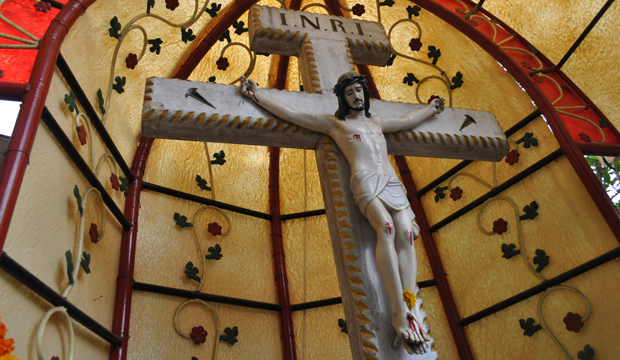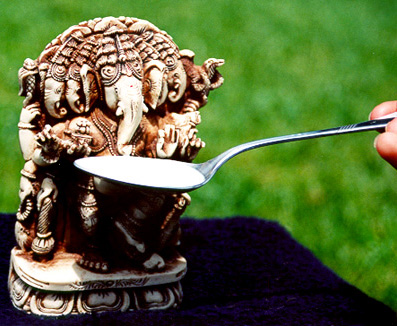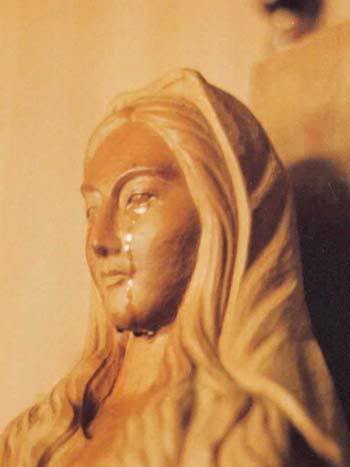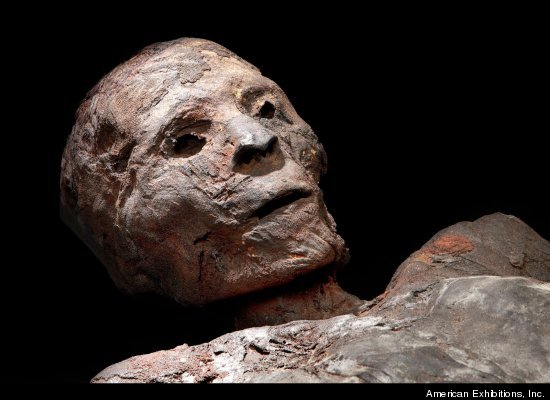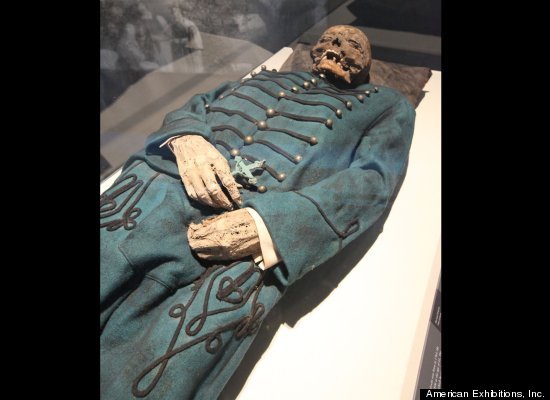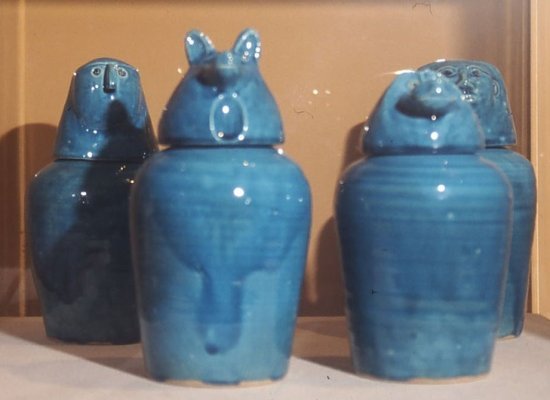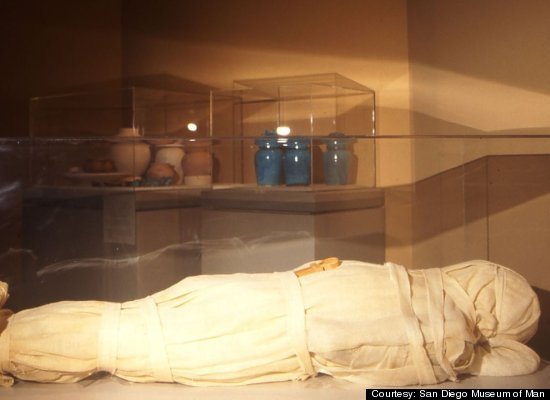[VIRAL] This Egyptian Statue Caught Moving On Its Own. How?
Curators at the U.K.’s Manchester Museum were a bit perturbed when they noticed an ancient Egyptian statue changing position over time without any employees claiming to have moved it. So, they set up a camera to capture what might be happening. What they saw was just as unnerving.
Manchester Museum's moving Egyptian statue puzzler
Don't go running to mummy just yet: the spooky movements of this Egyptian statue probably have a logical explanation, even if museum curators are in de-Nile about it.
Video recording fails to explain spontaneous movement of 4,000 year-old statue
The 10ins (25cm) high stone statue, which dates back to 1,800 BC and was donated to the museum by a private collector in 1933, has been caught moving on time lapse video.
Visitors flock to Manchester museum
Museum chiefs said it was the busiest Monday on record as hundreds of extra visitors turned up, with most asking to see the statue.
Is this a sign that there really is a curse of the Pharaohs?
Oddly, the statue turns 180-degrees to face backward, then turns no more. This led some observers to wonder if the statue moves to show visitors the inscription on its back, which asks for sacrificial offerings
“In Ancient Egypt they believed that if the mummy is destroyed then the statuette can act as an alternative vessel for the spirit. Maybe that is what is causing the movement.”, said Egyptologist Campbell Price
Mr Price said: ‘Brian thinks it’s “differential friction” where two surfaces, the stone of the statuette and glass shelf it is on, cause a subtle vibration which is making the statuette turn. But..
dailymail.co.ukWhat other experts and people are saying on this
Without closely examining the base of the statue it’s impossible to know exactly what’s going on, but the most likely explanation is that the base bulges out very slightly, creating a convex surface.
Other experts have a more rational explanation – suggesting that the vibrations caused by the footsteps of passing visitors makes the statuette turn.
doubtfulnews.comPut a couple dabs of Museum Wax under it. If tis till move then we'll have something interesting. Otherwise, meh.
randi.orgOther headline-grabbing statues that drunk, wept and even sung
The Church of Our Lady of Velankanni in Mumbai became a major venue for pilgrims after its statue of Jesus began to drip water, and the church was happy to encourage this stat of affairs. So when pesky old skeptic Sanal Edamaruku revealed that faulty plumbing was causing water to leak onto the Son of God, the protests were none too happy. Although he is a longstanding debunker of religious myths, and a vocal critic of the church (including Mother Teresa), on this occasion things went further. After being charged with blasphemy, and receiving death threats, he sought exile in Europe, where he is trying to persuade governments to put pressure on India to abandon its archaic law.
Image via anorak.co.ukEarly in the morning of 21 September 1995 a worshipper in New Delhi offered milk to a statue of the Hindu deity Ganesha, whereupon the elephant god reportedly snorted it up his trunk. Throughout the morning the milk drinking spread to statues of other gods in temples all over India. Later the same day, the new craze reached Britain and other countries. Indian scientists suggested that capillary action was causing the liquid to rise from proffered spoons before running down the front of the statues.
Image via csuchico.eduReports that a roadside statue of the Virgin Mary had started to move in Ballinspittle, County Cork, triggered off a series of sightings of other moving statues around the country. Sadly on this occasion a Catholic bishop declared this Marian apparition to be an illusion. Nevertheless, around 100,000 people were said to have visited the site of the ‘miracle’. Incidentally, after 15 pints of Guinness, whole churches can sometimes appear to move.
Image via anorak.co.ukWhen statues ‘weep’, the chances are that the lachrymose protagonist will be the Virgin Mary. Reports are legion, but only one has been officially sanctioned by the Vatican: Our Lady of Akita, reported in 1973 by Sister Agnes Katsuko Sasagawa (below) in the remote area of Yuzawadai, near Akita. This wooden statue of the Virgin Mary – which also apparently manifested stigmata, as did Sister Agnes – is said to have wept on 101 occasions over the following six years.
Image via saintmary.caMummies around the world
This Egyptian mummy is an adult man who was unwrapped long after his mummification. Analysis of a CT scan data shows that the man was around 45 to 50 years old and around 5 feet, 4 inches tall when he died. The body still has the remains of the gold that was applied to his face and hands during the mummification process. His fingernails are dark red, although it is not yet known if this was caused by disease or was cosmetic.
Image via huffpost.comThis howler monkey is from the site of Grand Chaco, in Argentina, South America. It has not been radiocarbon dated, but it is likely that the monkey was naturally preserved in the warm, dry environment of the area and prepared for display, with a rhea feather skirt and feather wreath around its head and neck.
Image via huffpost.comThis young woman with long, black hair was naturally mummified in the warm desert air, seated in the burial position typical in Chile before 1400 A.D. She was wrapped in fabric after her death, the impression of which is still visible on her chin and cheeks. She has unusual tattoos; an oval with a dot inside on both breasts and beneath the left corner of her mouth. Little is known about the meaning of these mysterious tattoos.
Image via huffpost.comMichael Orlovits and his wife, Veronica, and son Johannes, are part of a group of 18th century mummies discovered in a long, forgotten church crypt in the town of Vac, Hungary, in 1994. Born in 1765, Michael died in 1806 at the age of 41. He worked as a miller, grinding grain into flour and is wearing a replica of the original clothing in which he was buried.
Image via huffpost.comThis Peruvian child mummy, known as the "Detmold Child," has been radiocarbon dated to 4504-4457 B.C. -- more than 3,000 years before the birth of King Tut. The child, which was about 10 months old when it died, naturally mummified in the hot, arid desert environment.
Image via huffpost.comThe ancient Egyptians used to remove the vital organs of the people they mummified and would place them in airtight canopic jars.
Image via huffpost.comThis mummy, known as "Mumab," is only 15 years old but it was done in the ancient Egyptian style by Dr. Bob Brier and Ronn Wade, who used the cadaver of a Baltimore man who died in his seventies of heart failure, and donated his body to science.
Image via huffpost.com
